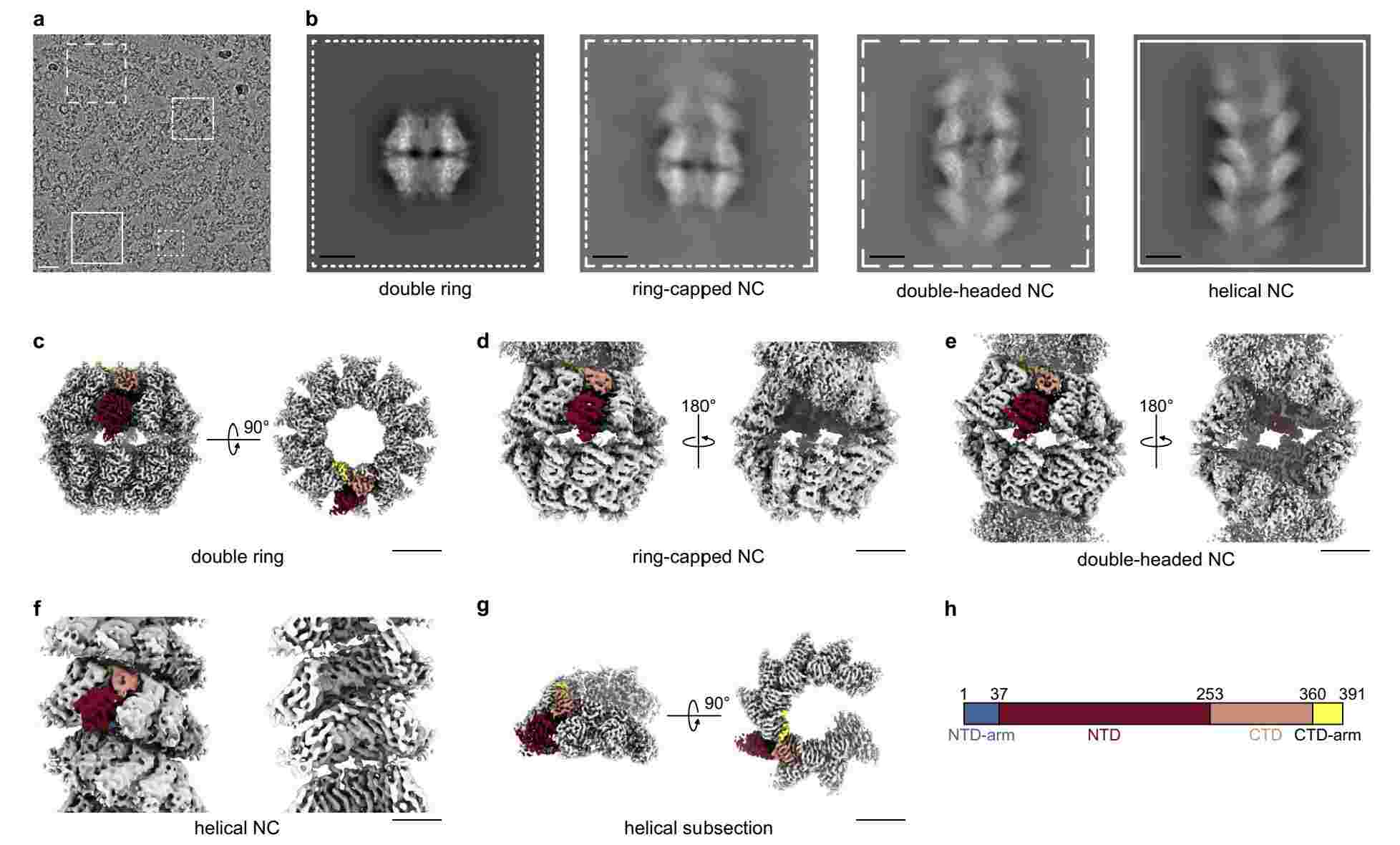Structural Research of Pneumoviridae
The Pneumoviridae are a family of viruses with large enveloped negative-sense RNAs, comprising two genera, Metapneumovirus and Orthopneumovirus. Human metapneumovirus (HMPV), a member of the Pneumoviridae family, is a common pathogen of lower respiratory infections in young children, and HMPV infection may progress to pneumonia. In the face of the enormous health impact of pneumoviruses, it is essential to resolve the three-dimensional structure of the viruses to gain a deeper understanding of their molecular mechanisms, protein interactions, and viral assembly. In recent years, the resolution revolution in cryo-electron microscopy (cryo-EM) has had a significant impact on the structural analysis of the Pneumoviridae and has revealed the underlying mechanisms of invasion by Pneumoviridae members.
Advances in Structural Research of Pneumoviridae
In recent years, significant progress has been made in the field of structural elucidation of pneumoviruses, revolutionizing the understanding of the molecular structure and biology of these essential respiratory viruses. Structural biologists have made remarkable progress in elucidating the three-dimensional structures of typical members of the human respiratory syncytial virus (HRSV) and HMPV. The advent of cutting-edge techniques, particularly cryo-EM, has captured high-resolution images of pneumoviruses at a resolution of 2.86 Å, revealing intricate details of their protein composition and overall organization. The research has helped to determine the structure of the viral capsid, glycoproteins, and other important components, providing an essential understanding of viral entry, replication, and assembly.
Structural Features of Pneumoviridae
Using HRSV-A2 as a research subject, the virion is found to include both spherical and filamentous forms, with large differences in size and shape. The viral particle consists of a lipid envelope surrounding a capsid containing three spike-like protruding transmembrane viral glycoproteins 10-14nm, and the viral capsid consists of a single-stranded viral RNA genome, which binds tightly to associated viral proteins, including the viral polymerase. The nucleocapsid helix is arranged in a non-canonical manner, with each asymmetric unit consisting of 16 nucleoproteins. The lipid envelope is underlain by a non-glycosylated membrane or matrix protein (M), which is underlain by a second non-glycosylated membrane or matrix protein (M2-1). It is worth emphasizing that the M2-1 protein is distinct from the Pneumoviridae family and lacks a homolog within any other.
 Figure 1. Cryo-EM analysis of HRSV nucleocapsids. (Gonnin L, et al, 2023)
Figure 1. Cryo-EM analysis of HRSV nucleocapsids. (Gonnin L, et al, 2023)
The structural resolution of pneumoviruses is of immense value. It helps to identify and characterize critical viral proteins and their interactions with host factors, revealing mechanisms of viral entry, replication, and pathogenesis. Structure elucidation accelerates the development of targeted antiviral therapies and vaccines against pneumoviruses infections.
Creative Biostructure is at the forefront of providing virus-like particles (VLPs) products that are carefully designed to closely resemble the morphology and surface features of pneumoviruses, representing an invaluable tool for applications such as vaccine development, drug discovery, and diagnostic analysis.
| Cat No. | Product Name | Virus Name | Source | Composition |
| CBS-V598 | Chimeric HBV & RSV VLP (core protein; V attachment glyco (G) protein+M2 epitope Proteins) | Hepatitis B virus; Respiratory syncytial virus | E. coli recombinant | Core protein; V attachment glyco (G) protein+M2 epitope |
| CBS-V740 | Respiratory syncytial virus VLP (F; M Proteins) | Respiratory syncytial virus | Mammalian cell recombinant | F; M |
| CBS-V749 | Rift Valley fever virus VLP (G; N Proteins) | Rift valley fever virus | Insect cell recombinant | G; N |
| Explore All Pneumoviridae Virus-like Particle Products | ||||
Creative Biostructure is a leader in the structural analysis of biological macromolecules and has cutting-edge cryo-electron microscopy (cryo-EM) techniques to analyze the complex structures of pneumoviruses. Our services can greatly enhance our clients' understanding of the molecular complexity and biology of respiratory viruses, which play an essential role in the development of therapeutics, vaccines, and epidemiological strategies. If you are interested in our structural biology services and virus-like particles (VLPs) products, please feel free to contact us.
References
- Gonnin L, et al. Structural landscape of the respiratory syncytial virus nucleocapsids. Nat Commun. 2023. 14(1): 5732.
- Rima B, et al. ICTV Virus Taxonomy Profile: Pneumoviridae. J Gen Virol. 2017. 98(12): 2912-2913.
- Cao D, Liang B. Cryo-Electron Microscopy Structures of the Pneumoviridae Polymerases. Viral Immunol. 2021. 34(1): 18-26.
